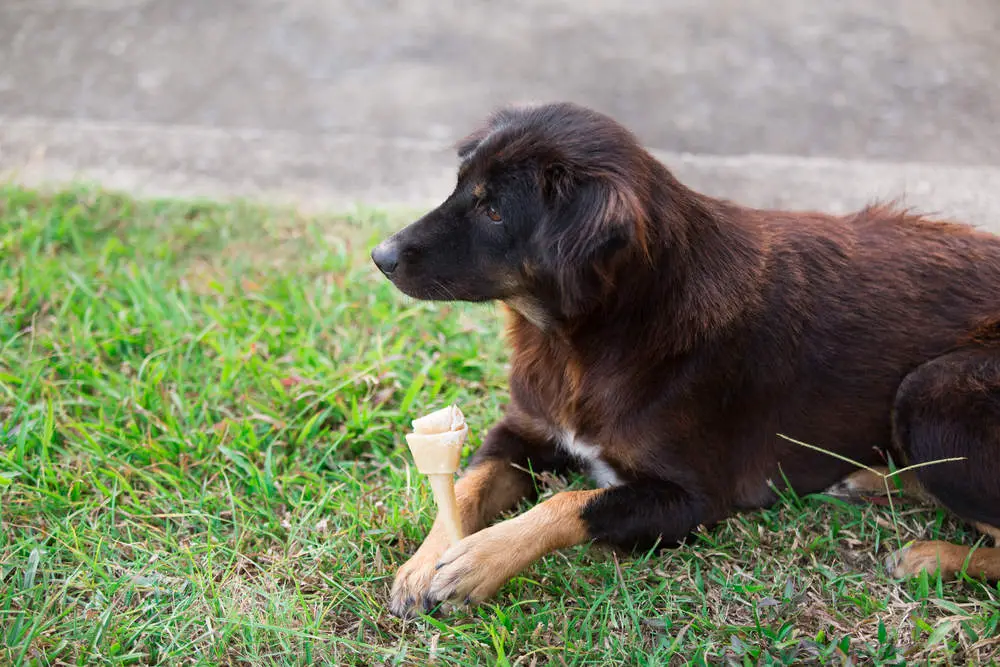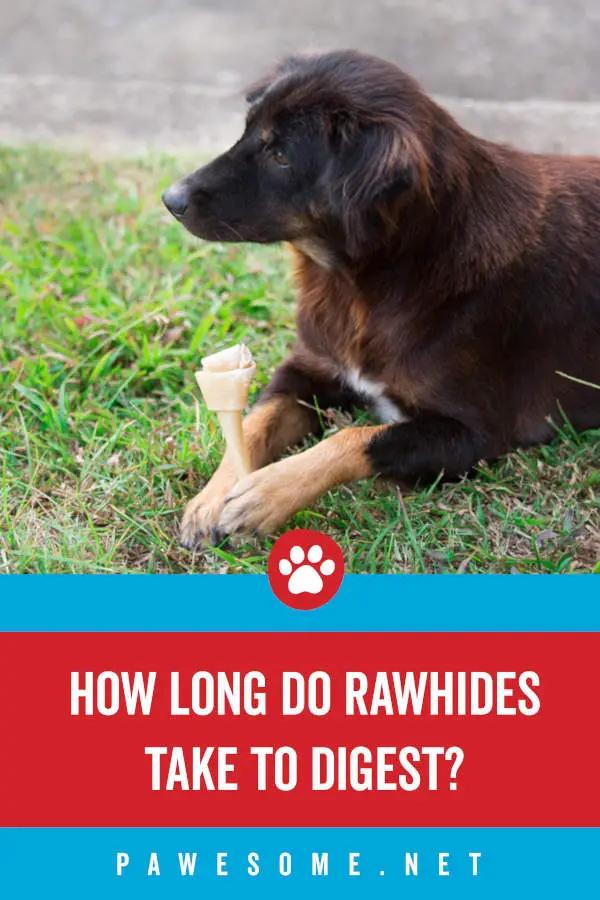 Food is a universal language. It’s something that brings joy to the soul.
Food is a universal language. It’s something that brings joy to the soul.
It makes bad days tolerable and is a part of the celebration on good days. It is a sign of happiness and health.
And it’s the same for us and our little furry friends. Rawhide is one of those treats that has divided dog owners. While some say it is great for their teeth, others have compared it to shoe leather. So which is it? Let’s see.
Back to Basics: What Is a Rawhide Made Of?
Rawhide is made of cows and cattle. It is made from the skin of a slaughtered bovine animal.
Rawhide is easily found in pet stores in all shapes and sizes. Those who don’t condemn this as a treat for their dog argue that it is good for your dog’s teeth and helps keep plaque and reduce tartar, keeping their breath fresh.
And some experts agree with this analysis. Plus, dog owners who want to keep their pets busy with something to chew quite like rawhides.
Those Against It Say No
But not everyone is a fan. Like Dr. Pippa Elliott from the University of Glasgow in the UK, who is appalled by the product’s popularity.
She says that rawhide, a byproduct of the leather industry, does not dissolve in the stomach and causes blockage in the intestines and leads to swelling of the stomach.
She argues that rawhide is soaked in more chemicals than shoe leather and undergoes a bleaching process that makes it a harmful treat. She also says it can lead to slow food poisoning and is also a choking hazard.
And to support her argument, Dr. Elliott cites the six recalls of dog rawhide chews by the US Food and Drug Administration between 2008 and 2011 due to salmonella.
Dr. Elliott says that when your dog takes a large chunky bite, the intestines might get blocked. She says that rawhide is not digestible at all and is at best passed into the intestine as a softer, bite-sized treat.
This could damage the walls of your dog’s bowels as it tries to poop and can be life threatening. Here are the symptoms to look for.
Vomiting, loss in energy and weakness. Rawhide or not, these symptoms need you to rush to the vet. Surgical procedures to remove the blockage are expensive and painful to your dog and you.
It is also possible for the dog to have peritonitis even when the procedure is a success. It is an inflammation caused by a bacterial infection in the blood or after a rupture of an internal organ.
This is how Dr. Elliott describes the process of making rawhide.
The skin is treated with chemicals to stop the degradation. Then, in a tannery, it is processed to remove the hair on the outside and the fat on the inside.
After that, more chemicals are added to separate or puff up the layers of skin. The inner layers are then washed in bleach to remove the rotten leather.
Then it is colored and flavored to make it look and smell the way the final product does on the shelf of your pet store.
Shoes and handbags are made from the outer skin while the inner layers are made into chews, glue and soap. Two of these three products are not food material.
Those in Favor Say Aye
Some call rawhide a convenient, quick and easy snack for the canines. The American Kennel Club calls it a tasty snack that keeps dogs busy and promotes oral health.
When analyzing the safety aspect, the AKC says it depends on many factors like chewing style, the ingredients and digestibility.
Chihuahuas chew differently from Rottweilers. Also younger dogs have softer mouths when compared to their older counterparts.
Chewing style is also something that changes with time and so whether it is safe or not must be monitored periodically.
According to the AKC, rawhides break into tiny pieces and that might be fine. But dogs with stronger chewing often bite off chunks of it and that can turn into a choking hazard or cause a blockage in the intestine.
The AKC admits that these are without a doubt life threatening. Their suggestion is that you break the treat into bite-sized portions before serving it to the pup.
And those of you who have heavy chewers might just want to steer clear of rawhide all together just to be safe. To Dr. Elliott’s point about the ingredients, here’s what they suggest.
Some companies are now promoting natural and organic rawhide. This means you need to pay attention to where these treats are manufactured.
Most of them, however, are made in China and shipped to different parts of the world. That often takes weeks and sometimes months.
So to keep them from decaying, they are taken from the floor of the slaughterhouses and put in high-salt brines and sent to a tannery. Here, they are treated to remove the fat and hair.
How to Decide?
According to the AKC, you might want to wash these treats before giving it to your dog. So, rawhide made in the US with a higher price tag might just be a better choice.
But the biggest question about rawhide is digestibility. When asked about that, the AKC is of the school of thought that rawhide is not an easily digestible treat.
It can stay in the stomach for months when not consumed in large chunks (as strong chewers do) and cause gastrointestinal problems. But you might see a different outcome if your dog is chewing on it for long periods of time.
Some companies are also making an effort to make rawhides out of relatively digestible ingredients. You might want to look into that.
But it is possible that your dog is simply allergic to these treats. You might also be on the lookout for yourself because some experts say even humans risk salmonella or E. Coli when they come into contact with the bacteria on rawhides.
So when you are buying rawhides (if you’re still willing to do that), the first thing to do is read the label. This is an unsurprising conclusion because it is something we should be doing with our food too.
Remember that thicker rawhide is better since it sort of forces the dog to chew for a longer period of time. Make sure there are no illegal or toxic chemicals used in the manufacturing process.
Keep an eye out for names like ash-lye or sodium sulfide lime, hydrogen peroxide. Particularly look for chemicals like titanium oxide, sodium benzoate which are used for flavoring.
They are known to carry carcinogenic (cancer causing) elements like FD&C Red 40.
In Conclusion
As is the case with most things, understand your dog’s preferences first. Monitor their chewing pattern.
If you choose to get rawhide, see if they are made in the US or far off countries like China. As always, read the labels.
Keep an eye out for dangerous chemicals. Once you bring the rawhide home, give your dog bite-sized portions and observe their eating patterns.
Depending on these varying factors, it takes anywhere between one to three hours for your dog to digest rawhide.
So that’s the window for you to check for any symptoms of allergy or food poisoning. And don’t forget to keep yourself safe from the bacteria on rawhide chews.

